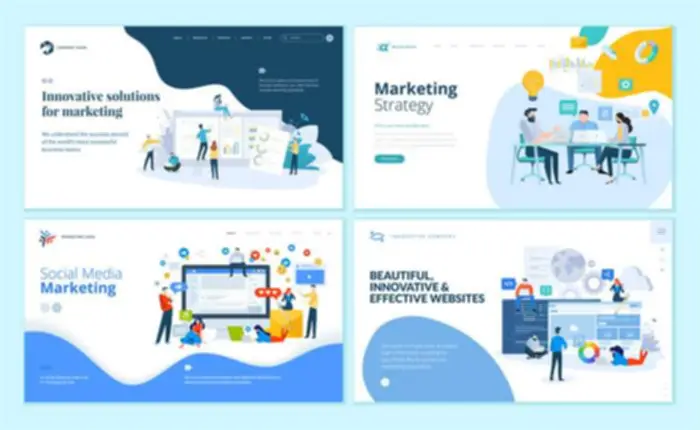Mounting the code is still a good suggestion though, if you want to use version control software on the host laptop (a Git shopper like GitKraken for example). You can attach VSCode to the container itself, open the project folder inside it and get to work. The file changes now happen contained in the container, no want for polling or mounting the code as a volume.
- Containers share the host kernel and don’t require full operating systems.
- Setting up networking between containers could additionally be challenging, particularly across multiple hosts or complicated topologies.
- Docker Hub simplifies the administration and distribution of container functions.
- Containers could be easily moved between completely different environments, such as improvement, testing, and manufacturing, with out the need for in depth reconfiguration or modification.
Whether you’re working on a small project or a large-scale software, Docker can greatly improve your development course of. A historically persistent issue with containers -- and Docker, by extension -- is safety. Despite excellent logical isolation, containers nonetheless share the host's operating system. An attack or flaw in the underlying OS can doubtlessly compromise all the containers working on prime of the OS. Vulnerabilities can contain access and authorization, container images and network Embedded system site visitors amongst containers.
Docker addresses this by creating containers that encapsulate not just the application, but also all of its dependencies. As Quickly As a Docker container is built, it can be run anywhere—on a developer’s laptop, a test server, or in production—without worrying about these differences. Docker is a software program development framework that lets you bundle and run apps inside virtual machines on a server. It’s typically used to create and take a look at functions before deploying them on an actual, bodily server.

Docker Scout detects and highlights security points, providing recommendations for remediation based mostly on policy violations and state modifications. Ensure your application safety by addressing considerations before they impression manufacturing. Achieve insights and context into your components, libraries, instruments, and processes with Docker Scout.
Suppose you have a database container and an application container that both want entry to the identical knowledge quantity. Volumes be sure that a number of containers can access and modify the same data consistently. A Dockerfile is a configuration file outlining the necessary actions for creating a Docker image, letting you automate the image creation process for consistency and repeatability. It starts with a base picture and provides layers by executing a collection of specified instructions. These layers are cached, making subsequent builds quicker if the layers haven’t changed.
In conventional environments, functions typically share assets and dependencies, which can result in conflicts or bugs when completely different software variations collide. Docker’s containerization ensures that each application runs in its personal isolated setting. This makes it potential to run a quantity of purposes on the identical machine with out the danger of one utility affecting another. One of the main reasons Docker is so useful in improvement environments is its capacity to make sure environment consistency. Traditionally, software program might behave differently in growth, staging, and production environments due to differences in system configurations, libraries, or other dependencies. This discrepancy is sometimes called the “works on my machine” downside.
Introducing Docker Mannequin Runner: A Better Way To Construct And Run Genai Fashions Regionally

One of Docker’s primary strengths is its capability to ensure consistency and compatibility across completely different environments. By encapsulating functions within containers, Docker eliminates the “works on my machine” drawback, making software deployment extra dependable and predictable. In conclusion, Docker’s containerization process supplies developers with a robust software for simplifying utility improvement. By encapsulating purposes and their dependencies into containers, Docker enables consistency, portability, and scalability.
Container Development
Ultimately, software program development is about productiveness, high quality, predictability, and consistency. As we transfer images between development, staging, and production environments and set up the corresponding containers, we are able to harness Docker’s benefits to expedite the software transport process. In other words, the appliance will work anywhere — from a developer’s pc to a bodily knowledge heart to a staging/QA surroundings to production. Imagine a situation where a software program development team is working on a project that requires multiple dependencies and libraries. Without Docker, every developer would have to docker team spend a significant amount of time organising their native environment, installing and configuring all the required parts. This course of can be time-consuming and prone to errors, especially when working with different operating systems or versions.
Gateway To Manufacturing
With today’s announcements, Docker is trying to take things additional. At launch, there are greater than a hundred MCP servers obtainable within Docker MCP Catalog. Whether you’re simply starting to be taught Docker or are well-versed in its capabilities, it’s a vital device for staying competitive amidst the growing adoption of microservices and cloud-native architectures. Docker ensures consistency throughout all environments, i.e., growth, testing, and production, minimizing sudden behaviors. Utilizing the identical Docker image all through the event pipeline reduces bugs brought on by inconsistent environments, resulting in quicker development cycles.
Docker MCP Catalog is constructed on the dimensions and reliability of Docker Hub, the world’s largest container registry with over 14 million images and millions of developers. To create a Docker-containerized utility, you begin by making a Dockerfile, which is a textual content file with instructions/commands which might be required to construct a Docker picture (more on this below). The Dockerfile includes data like programming languages, file locations, dependencies, what the container will do once it runs, and so on.
This is extra of a "meta" writing about container based improvement, not a guide on getting started with it. I have been developing React apps in Docker for a couple of years now, and up to now nothing was capable of cease me from containerizing every project I get began with. Each side of a container runsin a separate namespace and its entry is restricted to that namespace. Arguments such as "Docker is too much", or "Docker is only helpful for production", usually include lack of understanding. There are very well documented best practices round Docker in growth that, if correctly utilized, will refute those arguments. The Docker documentation reference is pretty good and can provide you virtually each info you have to make your initiatives running on Docker.
You can easily build it again if you want to proceed and you'll get the same environment. You would possibly create your personal photographs otherwise you may only use these created by othersand printed in a registry. To build your personal image, you create a Dockerfilewith a easy syntax for defining the steps needed to create the image and runit. When youchange the Dockerfile and rebuild the picture, only those layers which havechanged are rebuilt. This is part of what makes images so light-weight, small,and quick, when compared to other virtualization applied sciences. The Docker shopper talks to theDocker daemon, which does the heavy lifting of building, working, anddistributing your Docker containers.
With Docker, you'll have the ability to define all dependencies for an utility in a Dockerfile, a script that specifies precisely how to build the Docker image. This implies that once the container is built, all required libraries and dependencies are bundled with the applying, lowering the chance of model conflicts and simplifying updates. Builders no longer want to worry about managing individual dependencies throughout environments, as Docker containers will at all times have the identical setup wherever they're deployed.